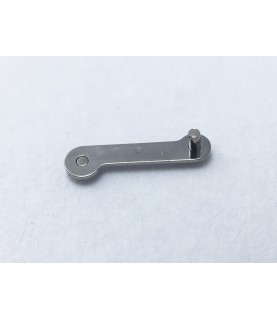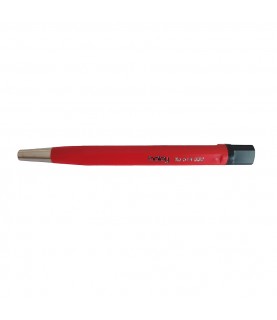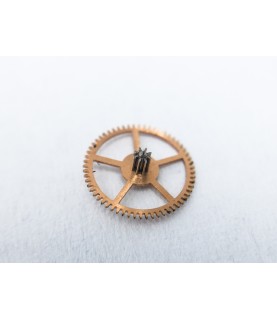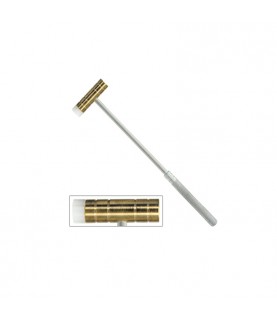In-House Movements: Building The Foundation
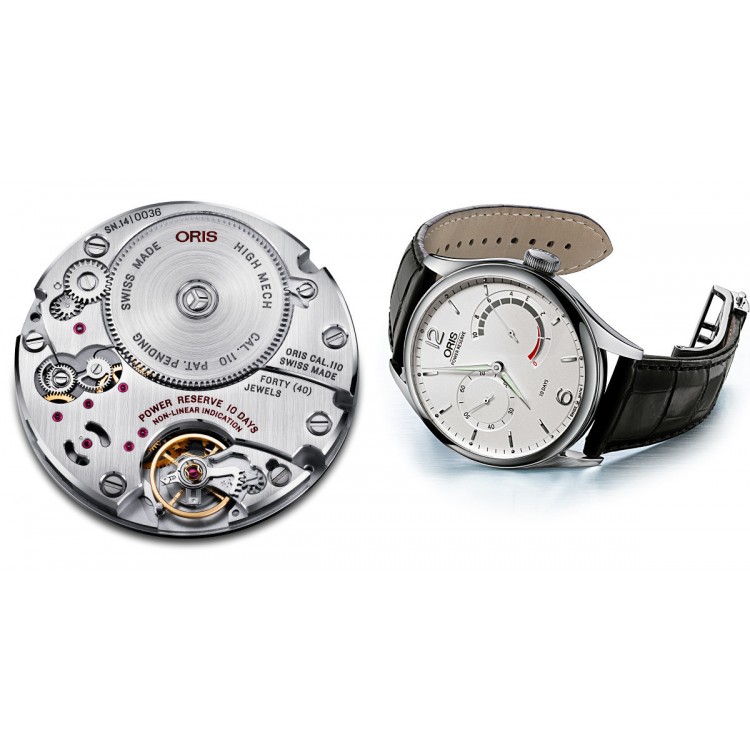
Rome wasn't built in a day – and neither was Rolex, Patek Philippe, Jaeger-LeCoultre and other watch manufacturers praised for their vertical integration and lauded for their array of in-house calibers. While we all applaud the handful of brands that have ramped up their in-house production, either recently or since the beginning, to a capacity that brings new and increasingly complicated calibers to market virtually every year – your Parmigianis, your Greubel Forseys, your A. Lange & Söhnes, to name just a few – we also should take note of other brands, many of them smaller, independently owned, or known throughout their history more for outsourcing their movements – that are taking a more incremental approach. Here we take a look at five brands – three Swiss, two German – that are taking it slow and steady. Oris Oris, founded in the Swiss town of Holstein in 1904, can look back upon a fairly extensive history of watchmaking and movement making, albeit one that went on a lengthy hiatus in the wake of the quartz crisis. Between the year of its founding and 1981, the year in which the company's management decided to cease producing its own movements in favor of outsourcing ebauches from ETA and later Sellita, Oris developed 229 in-house calibers, including historically significant examples like Caliber 652 in 1968, the first pin-lever escapement movement to be chronometer-certified by the Neuchatel Observatory, and 1970s' Caliber 725, the company's first chronograph.

From 1982 onward, Oris would place its focus on the less intensive, and less costly, process of producing in-house modules for the base movements it acquired from its Swiss supliers. This is the era that gave birth to Oris's most famous visual signature, the bright red winding rotor that it added to all of its modified automatic base calibers. As Oris marked its centennial, however, its current ownership and management – headed by Executive Chairman Ulrich W. Herzog, one of two Oris employees who'd orchestrated the buyout from the nascent Swatch Group back in 1982 that made Oris an independent company – decided it was high time to plunge back into developing movements in-house from the ground up. To this end, Oris watchmakers and designers teamed with Switzerland's L'Ecole Technique Le Locle to design and produce a mechanical movement that would include a high level of functionality but would also be cased in watches that could be comfortably produced at Oris's famously reasonable price points and live up to the company's "Real Watches for Real People" slogan.

The project, which required 10 years of research and development, saw fruition in 2014, Oris's 110th anniversary, with the aptly named Caliber 110. The manually wound caliber, Oris's first mechanical one developed in house in 35 years, made its debut in a limited edition from Oris's dressy Artelier collection. It offered a world-first combo of a 10-day power reserve, stored in a single, extra-large barrel, and a patented, non-linear power-reserve indicator positioned at 3 o'clock on the dial. The latter required a special gearing system and an extra-long mainspring – nearly 1.8 meters, according to Oris Co-CEO Rolf Studer, who was heavily involved with the project. When posed the question of why Oris went with a 10-day power reserve for its in-house base movement, Studer stressed the brand's historical emphasis on both technical innovation and practicality. "When we resolved to make our own movement, we wanted to create something special, something that you don't usually see, something for the watch enthusiast and aficionado but still within the Oris philosophy of complications. It must make sense, it has to serve a purpose, and it should be within a price range that's realistic."

Oris has followed up Caliber 110 with added complications in the years since, each new variation adding a level of complexity and each thus far introducing a new combination of functions. The first three all made their debut in non-limited versions of the Artelier. Caliber 111 debuted in 2015, with a 9 o'clock date display balancing out the patented power-reserve indicator at 3 o'clock. For 2016's debutante, the Artelier Calibre 112, Oris added a GMT with day/night indication, another combination never before seen in watchmaking. The second time zone is indicated in a subdial at 9 o'clock with dedicated hour and minutes hands while the day/night display uses two apertures – one round like the sun, the other crescent-shaped like the moon – over a two-tone rotating disk that turns the sun white and the moon dark during daylight hours and the reverse during the nighttime. Baselworld 2017 saw the release of Oris's Artelier Calibre 113, which resurrected a nearly forgotten "every-day" complication from yesteryear, a so-called "business calendar" indicating the day, date, week, and month of the year; day and date appear in windows at 3 and 9 o'clock, while a red-tipped pointer hand highlights both the week and the month on two concentric scales on the outside of the dial.

The most recent Oris-exclusive movement, which debuted at Baselworld 2018, is the first to be encased not in an Artelier but in Oris's vintage-inspired pilots' watch, the Big Crown Pro Pilot. This one's world-first feature is a 24-hour second-time-zone indication that the user can adjust to the nearest half hour, a tool that is useful for travel to places like Australia and India, whose time zones don't line up with the standard 24 designations found on most GMT and world-time watches. Not as sexy as a flyback chronograph or double tourbillon, but fully in keeping with the brand's philosophy, or as Studer puts it, "just that little bit of extra you expect from Oris." Tutima Germany's Tutima, which began in-house movement production in earnest upon its much-heralded return to Glashutte in 2013, approached the challenge in a substantially different way than did Oris. Rather than building a base and adding layers of complication in subsequent movements, Tutima shot for the horological starts right out of the gate, building the first minute-repeater caliber ever to be made entirely in Germany, and using it as a template for complications of far less grandiosity. The manual-winding, 550-plus-part Caliber 800 inside the Hommage Minute Repeater is notable for its meticulously handworked parts and finishing – including filigreed edges, polished screw heads, and a hand-carved relief engraved balance cock – as well as its distinctive architecture, in which two mirror-polished hammers strike gongs attached to the case, rather than the movement itself, for optimal richness and clarity of tone. This groundbreaking high complication, three years in the making, was not meant to be a one-off novelty trumpeting Tutima's watchmaking expertise, but the forerunner of a whole series of new-generation manufacture movements for a German company that had been largely dependent on Swiss-made ebauches since the Cold War era.

Stripping the complex Caliber 800 down to its most basic functions – central hours and minutes and small seconds – yielded Caliber 617, the movement that made its debut in Tutima's classically elegant Patria timepiece, ensconced in a 43-mm 18k rose-gold case, behind a white opaline dial with an extra-large calibrated seconds subdial at 6 o'clock. The movement's traditional Glashutte three-quarter mainplate has a golden finish; the hand-polished, skeletonized balance cock boasts hand-beveled edges, the oscillator beats at 21,600 vph, and is paired with a Breguet hairspring with terminal curve. In another version of the Patria, released the same year, Tutima added another "quiet but useful" complication, the display of a second time zone, which appears in the same subdial as the seconds. The watch is called the Patria Dual Time, and the movement has been dubbed Caliber 619.

Debuting in 2018 was the Patria Power Reserve, outfitted with another iteration of the base Hommage movement, called Caliber 618. In addition to the central hours and minutes and small seconds, this timepiece's asymmetrical dial hosts at the 9 o'clock position an indicator for the movement's 65-hour power reserve – an eminently useful feature in any watch with a manual-winding movement. But it is the manufacture Caliber launched by Tutima in 2017 that is perhaps the one that most embodies the spirit of the brand's history, which is inextricably linked to military aviation. The manually wound Caliber T659 makes its debut inside the Tutima Tempostopp, a flyback chronograph that represents a contemporary and decidedly luxurious update of the iconic Fliegerchronograph, worn by German pilots in the 1940s, and its now-legendary movement, the Glashutte UROFA Caliber 59. "Tempostopp" is the German word describing the flyback function, which allows the wearer to start, stop, and return to zero the chronograph's second hand with the push of a button to immediately begin timing a new interval. The watch, whose elegantly balanced bi-compax dial features parallel subdials at 3 and 9, makrs Tutima's 90th anniversary and is limited to 90 pieces. "The design concept for the new Tempostopp started from the inside out", says Tutima USA, Inc. President Gustavo Calzadilla. "The objective was first to re-introduce the legendary UROFA Caliber 59. For this we had to reverse-engineer a movement for which no tool, parts or blueprints existed.

Each of the 220 movement parts was reproduced individually to bring this caliber back to life. From there, Tutima created a solid gold case and stunning dial, which maintains some of the characteristics of a flieger chronograph but in a more elegant interpretation. The result is the perfect marriage of elegance, heritage and craftsmanship." If one were so metaphorically inclined, one could look at Tutima's multi-year movement-making strategy in terms of test piloting: it jumped to the highest altitude before flying close to the ground and settling into a comfortable cruising altitude. We will all see to what new heights its watchmaking expertise will soar next. Nomos While Tutima has only recently returned to the Saxon watchmaking hub of Glashutte, its roots there stretch back to 1927. Nomos, on the other hand, is a relative newcomer, founded in 1990 just two months after the fall of the Berlin Wall. Known for its youth-oriented marketing and minimalist Bauhaus designs – not to mention its multiple Red Dot Design Awards – Nomos began its program of in-house movement making in 2005, introducing both the manual-winding Alpha caliber and the self-winding Epsilon. The ambitious brand began following both up with increasingly complicated variants over the ensuing years. On the manual-wound side, there was Caliber DUW 4101 (the initials stand for Deutsche Uhrenwerke), which introduced both a patented date mechanism and the now-ubiquitous Nomos Swing System, an innovative, in-house-devised escapement recognizable for its tempered blue balance spring.

A flurry of other manual-wound movements equipped with this system followed in quick succession – DUW 4301, with a patented power-reserve indicator inspired bu a car's fuel gauge; DUW 4401, combining this indicator with the date mechanism; DUW 1001, produced exclusively for Nomos's most luxurious model, the gold-cased Lambda, and boasting an 84-hour power reserve in two barrels; and DUW 2002, which features the same long power reserve as the DUW 1001 and is tonneau-shaped to fit snugly in the brand's Lux model. The Epsilon movement begat the Zeta, which added a date function to the hours, minutes, and small seconds. Following these came the first self-winding movements equipped with the Nomos Swing System, which included the DUW 5001 (small seconds), DUW 5101 (small seconds and patented date), and DUW 5201, with an added world-time function, used in the Zurich World Time and Tangomat GMT models. By 2015, the swing system was beating at the heart of the ultra-thin, automatic Caliber DUW 3001, which made its debut in the neomatik first-edition models (notable for their Champagne-colored dials).

At just 3.2 mm thick, this next-generation movement also boasts a proprietary gear train, optimized by changing the order, angle, and number of teeth, thus raising its efficiency to 94.2 percent. Almost all the watchmaking parts, including an extra-flat ratchet wheel, are made of a special low-friction alloy and inserted between the base plate and the traditional Glashutte three-quarter plate, where the construction space is only a millimeter in height.

Caliber DUW 3001 has gradually been extended to nearly all of Nomos's watch families, including the elegant, round-cased Tangente, the square-cased Tetra, the smaller-sized Minimatik, and the diving-inspired Ahoi. A slight adjustment of Caliber DUW 3001 – separation of the seconds display from the central hands and relocating it to a subdial – birthed the off-shoot Caliber DUW 6101, which powers the Autobahn models launched at Baselworld 2018. Tudor For much of its existence, Tudor had been regarded by most timepiece aficionados as the little brother of watch-industry-giant Rolex, and its watches had mostly reflected that in both their derivative designs and their use of out-sourced movements. Since its much-ballyhooed return to the United States market in 2013 after an absence of nearly 10 years, however, Tudor has established a look and identity that is more distinctly its own. And when the Rolex-owned company made the inevitable decision to seek out more vertical integration in its movement making, it did not do what many would have expected – i.e., turn to Rolex, rather than suppliers such as ETA, to provide its calibers – but instead established its own atelier in the watchmaking hotbed of Bienne, Switzerland, where Rolex and numerous other brands are also headquartered.

The first movement to emerge from the new Manufacture Tudor, Caliber MT5621, was five years in the making and debuted in the Tudor North Flag model in 2015. In keeping with that watch's "explorer's tool watch" aesthetic, as well as Tudor's mandate to produce high-quality Swiss-made mechanical watches at affordable prices, the movement features a minimal level of decoration and a mate look, but does not skimp on other important technical features: it's equipped with both a date display and a power-reserve indicator; it's got a power reserve of 70 hours; it beats at a frequency of 28,800 vph and has a variable inertia oscillator equipped with a silicon balance spring; and its automatic winding system is bidirectional. Perhaps most notably, Caliber MT5621 is officially chronometer-certified by COSC. Methodically baby-stepping forward, Tudor added a date function to the movement to create Caliber MT6512, which debuted in 2017's Heritage Black Bay Steel. Many of the contemporary Tudor models that took watch aficionados by storm upon the brand's U.S. return, specifically in the Black Bay and Pelagos series, have recently seen their outsourced ETA movements replaced by either Caliber MT5621 or MT5612.

And when Tudor resolved to introduce its own dedicated chronograph movement, it worked not with Rolex but with Breitling, adopting that brand's Caliber B01 as the base for Tudor Caliber MT5813, which made its auspicious debut in 2017's Heritage Black Bay Chronograph, (The partnership is mutually beneficial; Breitling uses the stripped-down, sans-chronograph version, the MT5612, as a base movement for its Heritage Superocean model.)

Caliber MT5813 brings to the table all the considerable attributes of the B01, which made headlines as Breitling's first in-house movement back in 2009 – bidirectional winding, a column-wheel-controlled chronograph mechanism with a vertical clutch, a 70-hour power reserve in a single mainspring barrel, a non-magnetic silicon balance spring, a speedy 28,800-vph frequency, and a COSC chronometer certification – while still being recognizable through the exhibition caseback as belonging to Tudor, with its industrial-look, matte-surface plates and skeletonized rotor. Tudor has indicated that more collaborative efforts with Breitling may be on the horizon, meaning venerated Rolex founder Hans Wilsdorf's other little watch brand may be stepping even further from Big Brother's shadow in the near future. Raymond Weil The neophyte in our quintet, at least in terms of movement-making, is Geneva-based, family-owned Raymond Weil, which up until recently had maintained its watches' relatively affordable price points with outsourced calibers from the Swatch Group's movement-making colossus ETA – which still, at this stage of the game, power the vast majority of the company's output. In 2017, however, Raymond Weil rolled out its first proprietary movement, developed not entirely in house from the ground up but in a creative collaboration with Sellita, another Swiss supplier of movements to various brands and ETA's major competitor in that field.

The resulting automatic movement, Caliber RW1212, is distinguished by the dial-side positioning of its regulating organ, whose balance-and-spring construction – positioned above the mainplate and held by two bridges – peeks out from an aperture at 6 o'clock on the watch's partially openworked dial, offering a visual effect akin to that offered by a tourbillon. All the elements relating to the regulating system, including the diamond-polished balance wheel and skeletonized bridges, were redesigned and pared down to aid in visibility.

A year later, Raymond Weil rolled out a skeletonized version of caliber RW1212 (the numerals refer to the postal code of Grand-Lancy, the Geneva suburb that is home to the company's HQ), in another Freelancer model, the Freelancer Caliber RW1212 Skeleton. In this watch, the dial has been openworked and the movement pared down to offer an unobstructed view of not only that telltale front-mounted balance but much of the rest of the mechanism as well; the rotor has also been skeletonized to enhance interest in the rear side of the movement, which is on display through a clear caseback. Much like Tudor, Nomos and Oris, Raymond Weil historically has strived to keep its watches priced under a certain threshold, meaning that its in-house movement development is likely to follow a similar path, with small complications gradually augmenting the faux-tourbillon design of the base movement – though the though of what a GMT, world timer or chronograph timepiece might look like in this fledgling collection is an intriguing one indeed.

